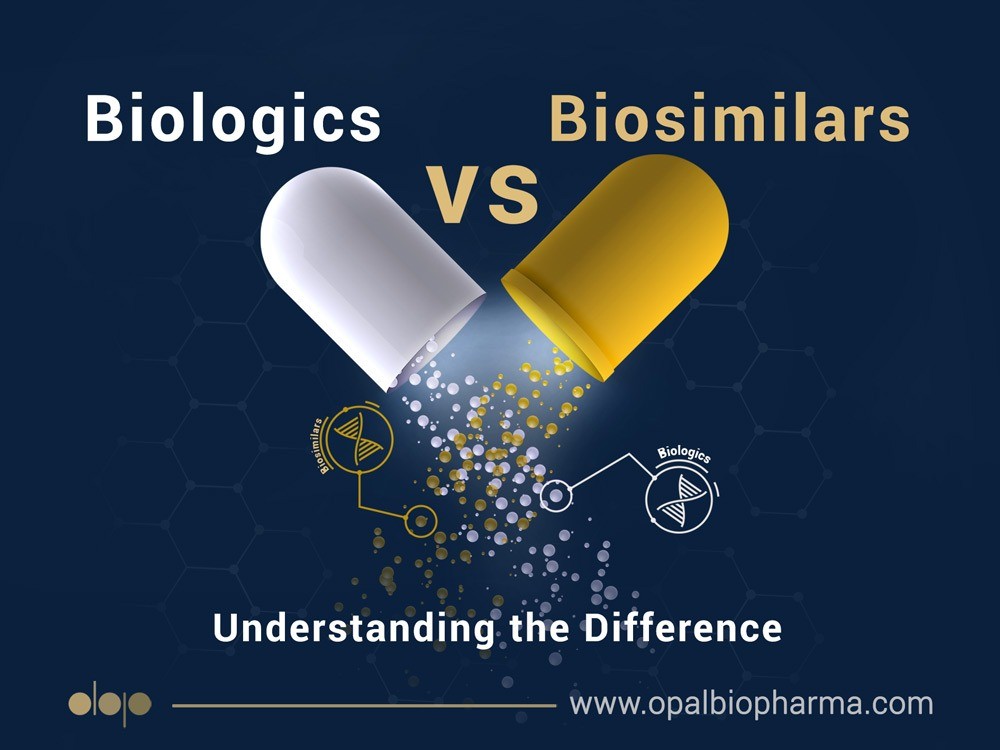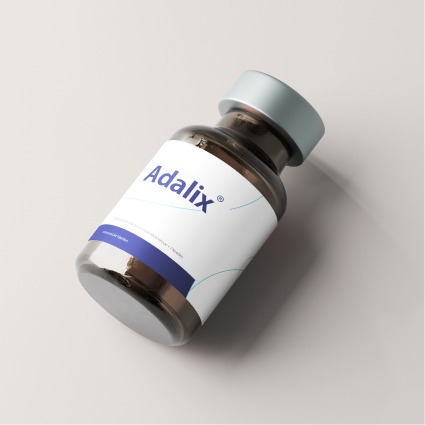Biosimilar vaccine was a revolution within a revolution. Of course, without question, the leaps and strides made in the medical sector over the past several decades have been nothing short of astonishing. This progress is evidenced by the development and application of biological and non-biological drugs, catering to many diseases, many of which were once considered incurable. Non-biological drugs are composed entirely of chemical ingredients, while biological drugs have a more complex structure made from living cells manufactured using biological entities during their production process. The nature of their production often means that biological drugs command higher prices and demand more time and resources for their development and finalization. Consequently, these factors can make them inaccessible to many desperately needy patients. In light of this, there has been a growing demand for more affordable alternatives that can match the efficacy of biological drugs but with quicker production timelines. This is where biosimilars step into the spotlight. Biosimilar vaccine, as its name suggests, closely mimics biological drug function. As these medicines continue to gain popularity, they are increasingly seen as invaluable alternatives to their more expensive counterparts, striking a balance between cost and effectiveness. This piece seeks to shed light on the world of biosimilars, exploring their unique characteristics and differences compared to biological drugs and why they are gaining recognition in modern medical practice.
Biosimilar Medicines
In a nutshell, a biosimilar medicine is a biological product highly similar to the pertinent biologic medicine already authorized for sale. The similarity lies in several aspects, such as function, potential side effects, dosage, and routes of administration. The first FDA-approved biosimilar is Filgrastim-sndz (Zarxio), the counterpart for Neupogen, and was approved in the United States on March 6, 2015. Nonetheless, the history goes back to Europe with the EMA-approved Omnitrope (biosimilar recombinant human growth hormone), which was approved in 2006. The fact that biosimilars are not the original medicines might prompt people’s dubiety about their utility and success rate. Nevertheless, biosimilars are subject to long series of surveillance and meticulous tests to get approval. As copies of already FDA-approved biologics, biosimilars must perform as similarly as their biologics. Many companies like Pfizer, Opal Biopharma (OBP), Biogen, and Novartis are trying to produce biosimilar vaccines and other biosimilar products in high demand.
Similarities with Biologics
While biosimilar vaccines hold immense promise for increasing access to life-saving treatment, it’s important to note that they must traverse a rigorous and extensive evaluation process before they can be brought to market. This process ensures that these medicines meet all requirements to be considered near equals to their original biologic counterparts. Primarily, these requirements revolve around ensuring that there are no clinically meaningful differences between the biosimilars and the original biologics. To achieve approval, biosimilar vaccines must demonstrate that they can behave and interact within the body in a manner almost identical to the original biologics. This is vital for ensuring their safety and effectiveness, non-negotiable attributes in healthcare.
However, while biosimilar vaccines are designed to mirror the effects of the original biologics as closely as possible, it’s also important to remember that, like any other medicine, they may have side effects. Generally, patients can expect these side effects to be similar to the original biologic. Yet, new symptoms may arise when using biosimilar vaccines, given the slight differences in their manufacturing process. When a patient experiences abnormal symptoms, it is crucial to consult with a healthcare provider immediately. This underscores the importance of ongoing medical supervision and dialogue when switching from a biologic to a biosimilar vaccine, ensuring the best possible outcomes for patients.
Currently Available Biosimilar Products
Many biological medications have their biosimilar counterparts, whether officially introduced to the market or in production. For instance, Adalimumab (Humira) is a biological drug categorized among TNF (tumor necrosis factor) inhibitors with multiple biosimilar products. Hyrimoz, Imraldi, Yuflyma, Amgevita, and Idacio are utilized to alleviate the symptoms of rheumatoid arthritis (RA), like chronic fatigue and joint swelling. Likewise, Ruxience, Rixathon, and Truxima are biosimilars for Rituximab (MabThera), a biological drug used for chronic lymphocytic leukemia. In addition, the demand for biosimilar vaccines, such as biosimilar influenza vaccine, is rising. Some more commonly used biosimilars and their original biologics are as follows:
- Ixifi and Inflectra for Remicade
- Zirabev, Mvasi, Alymsys, and Vegzelma for Avastin
- Fylnetra, Ziextenzo, Stimufend, Udenyca, and Fulphila for Neulasta
- Eticovo and Erelzi for Enbrel
- Ruxience, Truxima, and Riabni for Rituxan
Biologic Medicines
Biologics are considered highly effective treatments for numerous diseases and infections. The very first biologic medicines were smallpox vaccines, which date back centuries ago, around 1796. As for now, they are often offered as a variety of products, including vaccines, insulin, gene therapies, recombinant therapeutic proteins, stem cell therapies, allergenic tissues, monoclonal antibodies, cytokines, hormones, and somatic cells. As noted earlier, biologic medicines contain living entities like tissues and cells. Moreover, proteins, sugars, and nucleic acids can be the ingredients of biologic drugs solely or in complex combinations. Biologic drugs require a much more complicated manufacturing process than traditional non-biologic medicines from chemical ingredients like methotrexate and painkillers. That is the primary reason for their sky-high price tags. That said, biologics have instigated significant improvements in partial or complete treatment of many complex conditions, such as cancer, diabetes, human immunodeficiency (HIV), psoriasis, osteoporosis, inflammatory bowel diseases, rheumatoid arthritis, and ulcerative colitis. Biosimilar vaccines and medicines, conversely, are the optimum means to provide broader access for everyone, thanks to the more reasonable charges.
Ways to Get Biologics
There are multiple ways to receive biologic drugs, each with benefits and downsides. These pros and cons can be determining factors in the functionality of a specific method for your condition. The most prevalent methods are injection under the skin or intravenous (administrated in a vein) infusion, which can cause temporary itchiness and chills, redness, and swelling where you get the medicine. This is while biosimilars are given intravenously (into the vein, aka IV) or by injecting body tissues like skin. In addition to that, there are five more methods, including nasal (through the nose), buccal (inner cheek), pulmonary (inhalation into the lung), transdermal (through the skin), and sublingual (under the tongue). Compared to most traditional drugs, biologic medicines are efficient if taken orally. That is due to the breaking down of the biologics in the gastrointestinal tract.
Differences between Biologics and Biosimilars
As mentioned above, the similarities are prerequisites for biosimilars to get approved. Therefore, there are no outstanding fundamental and performative differences. However, biosimilars come at way more reasonable prices, similar to generic drugs that cost remarkably less than the original non-biological drugs. They can save costs from 44% to 69% for patients, in contrast to the reference biologics. This significant drop in prices is especially welcome in developing countries where many people find it difficult to afford the over-the-top charges of biologics. By way of explanation, biosimilars need to undergo simplified evaluations since the testing process is done using biologics as reference products. The quality of cost-effectiveness has distinguished biosimilars and left major impacts on the market. Bearing upon this matter, biosimilar products are estimated to save the United States $38.4 billion from 2021 to 2025. These advantages have driven many pharma companies towards investing more in manufacturing biosimilars. Opal Biopharma (OBP) is one of the pioneering companies with a principal interest in biosimilars, especially biosimilar vaccines. Enjoying state-of-the-art technologies and an R&D center, OBP spares no effort to research emerging diseases and produce cost-effective treatments.
Interchangeable Usage of Biosimilars
For patients under treatment with biologic products, changing the medications with some biosimilar ones, known as interchangeable biosimilars, is possible. Due to rigorous testing, interchangeable biosimilars can be substituted with or without being prescribed by health care providers. They are approved by U.S. Food and Drug Administration (FDA) and can be fully trusted regarding safety and functionality. Nevertheless, only three interchangeable biosimilars have made their way to the market by the end of October 2022, including a medication for retinal diseases (an ailment of the eyes), an insulin product, and a drug for inflammatory diseases. Along with biosimilars, the field of interchangeable biosimilars is promisingly flourishing, though at a slower pace. It is also noteworthy that not all biosimilar products are interchangeable. Yet, many pharma companies are researching more biosimilars with interchangeability status.
Final Thoughts
Biologics are much different than drugs in pill form, also known as small molecules. They are composed of complex ingredients, usually tissues and living cells. Moreover, biologics are made through an intricate biotechnology process, which justifies the high prices. On the other hand, biosimilars are similar versions of reference biological medications and are drawing more attention due to saving costs. After the limited patent duration, other companies can produce pertinent biosimilars without confronting infringement issues. Moreover, they are essentially similar—but not identical—to the reference biologics and must undergo several clinical trials to get approved regarding safety, quality, and efficacy. Biosimilar medicines, especially biosimilar vaccines, are drawing more attention worldwide due to public demand; they meet the same regulatory standards as biologics but cost less. Some of the most common biosimilar products include Mvasi, Erelzi, and Inflectra as biosimilars to Avastin, Enbrel, and Remicade, respectively. It is also worth mentioning that biosimilars are fundamentally different from small-molecule generics; generics contain identical ingredients, while biosimilars are highly similar to their reference biologics.

